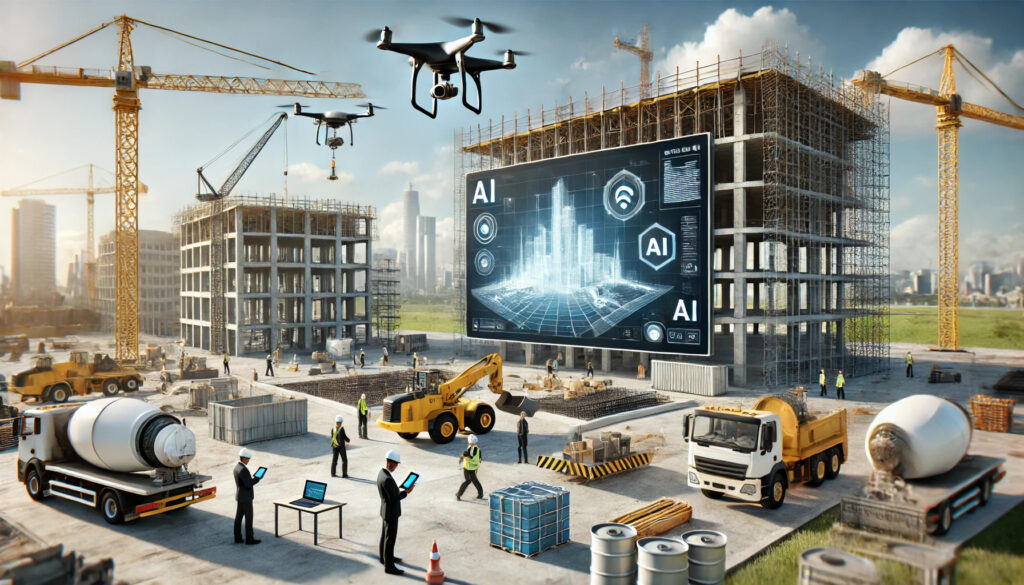Reusable long-range sensors are rewriting those rules. Embedded in fresh concrete, they beam temperature and strength data from deep inside the core to a cloud dashboard half a kilometre away, even on sites with patchy mobile signal. The information lets teams strike formwork, tension tendons and load decks with confidence.
The High-Rise Challenge in The 2020s
British cities race upwards, yet planners demand carbon cuts alongside speed and safety. Pouring oversized mixes “just in case” no longer passes audit. Data must prove each decision.
Strength Curves Under Pressure
Hydration is fickle. Winter chill may delay a pour by a full shift; a heatwave risks thermal cracking. Both threats cost money, but the optimum blend sits between over-engineering and under-performance.
Long-Range Sensing Networks Come of Age
Traditional wired thermocouples need trailing leads snaking across decks. By contrast, modern LoRaWAN nodes slip into the reinforcement cage, their flexible tails sitting exactly where the designer needs data. Each node transmits readings to a rooftop gateway more than a mile away.
Reusable and Low-Waste by Design
After 24 hours, operatives unscrew the sensor body, leave the tail in the concrete and redeploy the node in the next pour. One London contractor reused the same kit on fifty-plus lifts without a single dead battery. Less e-waste, lower cost and fewer procurement headaches.
Design Freedoms Unlocked by Certainty
Assured early-age strength encourages engineers to trim cement content, slim down columns and free extra lettable area. That lighter structure lowers embodied carbon while boosting rental yield—an irresistible combination for developers.
Real-Time Collaboration Across the Supply Chain
Because the dashboard updates every fifteen minutes, consultants in Manchester can adjust admixture dosages for the next day’s pour in Birmingham. Such agility was unthinkable a decade ago and now underpins the fastest programmes.
The Human Factor
Technology works best when someone owns it. The savviest contractors appoint a “sensor champion” responsible for installation, retrieval and data checks. Clear labelling, battery logs and daily QA walks ensure the kit survives the organised chaos of a high-rise deck.
Projects that cannot afford schedule drift turn to areusable long-range monitoring system to shave hours from every floor, prove mix optimisation and deliver greener skylines.
Case Study: Riverside Tower Beats the Clock
A 55-storey development beside the Tyne aimed for a four-day floor cycle. Eight sensors per lift revealed that wind-blasted east faces cooled faster overnight. The team reshuffled insulation blankets and pour sequencing, achieving a 3.5-day average and finishing two weeks early.
Quantifying the Carbon Benefit
By trimming idle crane time and right-sizing cement blends, the same project cut embodied CO₂ by 140 tonnes—the annual emissions of thirty typical UK households. In a world of ESG reporting, such numbers speak louder than marketing brochures.
Beyond Construction
Retained sensors now monitor humidity in basement plant rooms, warning facilities teams of rising water tables or HVAC faults. The data stays live, turning concrete from static mass into a guardian of asset value.
When buildings climb into the clouds, certainty becomes priceless. Long-range sensors offer that certainty without wires, without waste and without compromise.
Key Takeaways
Long-range wireless sensors are transforming high-rise construction by providing real-time, reusable monitoring of concrete curing. These compact devices deliver accurate strength and temperature data from deep within structures, enabling faster, safer progress while reducing waste, carbon emissions, and costs.
With dashboards updating every 15 minutes, entire teams—from on-site crews to remote consultants—can make informed decisions that accelerate schedules, slim down structural elements, and support sustainability goals.

